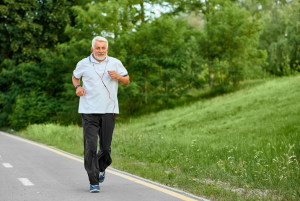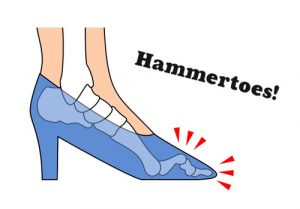Foot Issues in Your Fifties and Beyond

Foot troubles are an inevitable aspect of growing older. They result from natural joint wear and strain, as well as thinner skin that becomes more fragile as a result of dryness and elasticity loss. Foot problems usually appear in our 40s and 50s, with some problems becoming more severe or numerous as we become older. The following is a list of the most frequent foot problems that people experience as they become older, as well as some treatment options for each ailment.
1. Arthritis: Arthritis is a common symptom of aging. Osteoarthritis is what we commonly refer to as “wear-and-tear” arthritis, which is the unavoidable result of years of joint tension. The ankle joint, subtalar joint, and first MTPJ (big toe joint) are three joints that are prone to arthritis. The symptoms of bunions and hammer toes may intensify over time as the arthritis in particular toe joints progresses. Gouty arthritis is another joint condition that can occur in older people. Gout is a metabolic condition that causes severe arthritis symptoms in the big toe joint.
2. Circulatory Changes and Foot and Ankle Swelling: Swelling is one of the most prevalent foot and ankle disorders that comes with age. The cause of swelling might be difficult to pinpoint, especially if it isn’t related to an accident. Leg vein disorders are a typical source of swelling in the legs, and they normally affect only one limb at a time. Swelling in both limbs can be caused by cardiovascular disease, certain drugs, or hormonal changes.
3. Bunions: Bunions are caused by years of excessive pressure on the balls of the feet, which presses the toes out of alignment and causes the big toe joint to protrude. This results in a bulge that is not only unsightly, but also unpleasant. This is a prevalent foot condition among women who wear pointy-toed shoes frequently and for an extended period of time. Depending on the severity of the bunion and the amount of pain it causes, treatment options include switching to roomy shoes with a wide toe box, such as Orthofeet’s specially engineered shoes that alleviate pressure on bunions, using OTC non-medicated bunion pads, taking pain medication, applying ice to the bunions after a long day of standing, wearing padded inserts, and, as a last resort, surgery.
4. Hammertoes: A hammertoe is a toe deformity caused by an imbalance in the muscles or ligaments surrounding the toe joint. The middle joint of the toe bends and becomes caught in a claw-like position as a result of this. The bad news is that if hammertoe is not treated properly, it will worsen and may require surgery to correct. The good news is that it can be treated with simple exercises like picking up marbles with the affected toe, manually stretching the toe several times a day, and wearing footwear with low heels and a deep toe box, such as Orthofeet hammertoe shoes, which are designed with special technology to help alleviate the problems caused by hammertoes. If the discomfort becomes unbearable, your podiatrist may administer a cortisone injection. Surgery is the last resort and is only used if non-surgical treatment fails to fix the hammertoe.

Morton’s neuroma is characterized by a swelling of the tissue surrounding a nerve that leads to the toes. The most common location for neuromas is between the third and fourth toes, and they can be exceedingly painful. Treatment options include orthotic insoles with arch supports and shoe pads to assist relieve pressure on the nerve, steroid injections, and, in the worst-case scenario, surgery such as decompression surgery or nerve ectomy. Orthofeet offers a variety of shoes and orthotic insoles to help with Morton’s Neuroma pain alleviation.
6. Heel Discomfort: Another typical foot condition that appears in the 40s and 50s is heel pain. Plantar fasciitis is an inflammation of the thick strand of tissue that runs along the sole of the foot and connects the heel bone to the toes. It is one of the most prevalent causes of heel discomfort. It could also be linked to a rise in physical activity or a shift in footwear. The ache begins in the morning and then fades away rather quickly. Every stride can become agonizing as the illness worsens. Anti-inflammatory medications, chilling and stretching the heel, physical therapy stretching the plantar fascia and Achilles tendon, steroid injections, orthotic inserts, and orthotic shoes are all alternatives for treatment.
7. Calluses: Calluses are caused by too much pressure or friction on the bottom of the foot. They are not to be mistaken with corns. This foot condition is frequently caused by ill-fitting shoes. Calluses can also be caused by wearing shoes or sandals without socks on a regular basis. Calluses are typically treated by gently scraping and/or cutting the hard tissue build-up. Wearing well-fitting, supportive shoes with appropriate shock-absorbent soles can also assist relieve pressure on calluses and prevent further build-up.
8. Corns: Unlike calluses, corns occur over a bone or joint on the top of the feet or toes. Corns are usually dense, with considerably more thickness in the core. They can be irritating and make walking or jogging in shoes difficult. Corns come in a variety of shapes and sizes, but they all respond to the same treatment. Wearing better fitting shoes, such as shoes with a wide toe box to reduce pressure on toe joints, using moleskins to cushion the sore and reduce direct friction on the skin, wearing good orthotics, which when fitted with the proper shoe, can help redistribute weight and alleviate pressure, and trimming the thick areas of the corn (this should only be done by a professional) are all options for treatment.
9. Degenerative Diseases: Some degenerative diseases, such as osteoarthritis, can appear in your 40s. Symptoms include joint discomfort, stiffness, and tenderness, as well as a lack of flexibility and a possible grinding feeling when moving. Osteoarthritis necessitates specialized therapy, so see a specialist as soon as feasible. Your doctor may suggest a variety of therapy choices for foot comfort, including customized shoes such as Orthofeet shoes, which are designed specifically for arthritis sufferers.
10. Achilles Tendinitis: Achilles tendinitis is an overuse injury that most usually affects runners who have recently increased their distance and/or frequency of jogging. This foot condition is also common among “weekend warriors” (middle-aged adults who only run, play tennis, or basketball on weekends). The Achilles tendon — the band of tissue that connects the calf muscles of the lower, rear leg to the heel bone – has been injured, causing pain. The good news is that it’s rather simple to cure. Reduced exercise levels and stretching and strengthening of the calf muscles should be the first steps for anyone suffering from Achilles tendonitis. Additional treatments include chilling the affected area after exercise or when pain occurs, elevating the foot to reduce swelling, using anti-inflammatory medicine, and wearing shoes with a soft cushioned collar to relieve pressure on the back of the heel and relieve pain.
11. Diabetes: The chance of developing diabetes increases with age, and diabetic individuals frequently experience neuropathy, or a loss of pain sensitivity. As a result, injuries may go unnoticed, leading to infection and a diabetic ulcer. The healing process might also be hampered by insufficient blood flow and oxygenation to the legs. Diabetics must be properly treated for all elements of their illness, including diabetic neuropathy. The doctor may advise you to wear special shoes made for diabetic feet.
12. Nail Fungus: Fungal infections are caused by an excess of fungi under, in, or on the nail. Fungi flourish in moist, warm settings. Oral medication provided by a doctor is the most effective way to treat fungus infections. Topical treatments are rarely advised due to their lack of effectiveness. It’s extremely crucial for diabetics with nail fungus to consult a doctor, because untreated nail fungus can lead to major difficulties later on.
13. Parakeratosis (clogged sweat glands): While perspiration is an important skin function that helps regulate body temperature, clogged sweat glands can cause issues. Different skin disorders that restrict sweat glands are referred to as parakeratosis. The lumps caused by parakeratosis are sometimes confused with corns, although they are two very different issues. Walking and even wearing shoes can be unpleasant due to the lumps caused by this skin ailment. Furthermore, if the lesions are not treated, they can develop malignant. Certain drugs may be provided, and the lesions may be removed, to treat parakeratosis. Limiting sun exposure, bathing your feet thoroughly and regularly, and wearing soft, breathable shoes are all good ways to deal with the condition.
